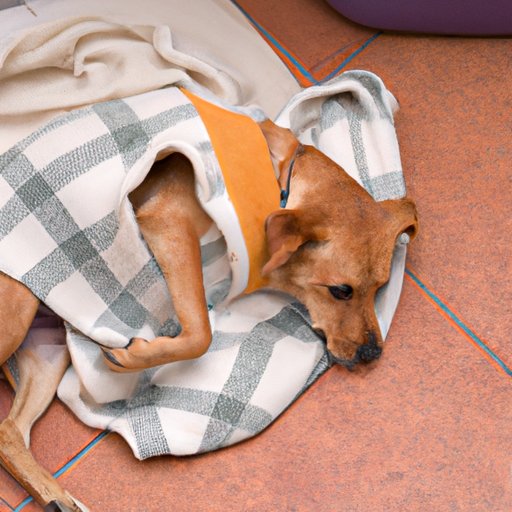
Introduction
If you own a dog, there’s a good chance you’ve had to deal with fleas at one point or another. These tiny insects feed on your dog’s blood and can cause a great deal of discomfort. Not only can they make your furry friend itchy and miserable, but they can also pose serious health risks. In this article, we’ll explore the top signs that your dog may have fleas, as well as how to spot them and prevent them from infesting your home.
The top 5 signs that your dog may have fleas
There are several signs that your dog may have fleas. Here are the top 5 to look out for:
1. Scratching and biting
If your dog is scratching, biting or licking themselves excessively, it may be a sign that they have fleas. Fleas are incredibly itchy, and your dog may be trying to relieve the discomfort by chewing or scratching at their skin. The constant scratching can also cause skin irritation and other skin problems.
2. Red bumps on skin
Fleas can cause small, red bumps to appear on your dog’s skin. These are often located on their stomach, groin, and armpit areas, where fleas tend to congregate.
3. Hair loss
In severe cases of flea infestation, your dog may begin to lose hair around the affected area. This can be caused by excessive scratching, which can lead to skin damage and hair loss over time.
4. Flea dirt
Flea dirt is a telltale sign of flea infestation. It looks like small black or brown specks and is actually flea feces. You may notice flea dirt on your dog’s bedding, or when you brush or comb their fur.
5. Visible fleas
If your dog has a severe flea infestation, you may actually be able to see the fleas crawling around on their skin. Fleas are tiny, reddish-brown insects that are about the size of a pinhead.
A guide to spotting fleas on your furry friend
Spotting fleas on your dog can be challenging, especially if they have long or thick fur. Here are a few tips to help you properly check your dog for fleas:
Use a flea comb
A flea comb is a specialized comb used to remove fleas and their eggs from your dog’s fur. Start by brushing your dog’s coat backwards using a regular brush. Then, use the flea comb to comb through the fur, paying special attention to the areas where fleas tend to hide, such as around the ears, tail, and belly.
Check areas where fleas tend to hide
Fleas tend to hide in warm, moist areas of your dog’s body, such as the groin, armpits, and between their toes. Part your dog’s fur in these areas and look for signs of fleas or flea dirt.
Flea prevention: Identifying the early warning signs
The best way to deal with fleas is to prevent them from infesting your home in the first place. Here are some warning signs to look out for:
Seeing fleas on other animals
If you know other pets in your neighborhood have fleas, be on the lookout for signs of fleas on your own dog. Fleas can easily jump from one animal to another, and it’s important to catch them early before they have a chance to infest your home.
Noticing scratching and itching
If you notice your dog scratching or itching more than usual, it’s important to investigate. It may be a sign of fleas, but it could also be a sign of other skin problems.
When should you be worried about your dog’s scratching and itching?
While scratching and itching can be a sign of fleas, it can also indicate a more serious problem. Here are some examples of when you should be concerned:
Allergies
Dogs can develop allergies to a variety of things, including food, pollen, and dust mites. If your dog has itchy skin year-round, it may be a sign of an allergy, and a visit to the vet may be necessary.
Infections
Itchy skin can also be a sign of a bacterial or fungal infection. If your dog’s skin is red, swollen, or oozing, it’s important to seek veterinary attention right away.
The ultimate checklist for detecting fleas on your dog
Here’s a quick summary of the key points we’ve covered in this article:
- Look out for signs of fleas, such as scratching and biting, red bumps on skin, hair loss, flea dirt, and visible fleas
- Use a flea comb to spot fleas on your furry friend, and check areas where fleas tend to hide
- Prevent fleas before they become a problem by looking out for early warning signs such as seeing fleas on other animals, and noticing itching and scratching
- If your dog is scratching and itching excessively, it may be a sign of a bigger problem such as allergies or infections
Conclusion
Knowing how to tell if your dog has fleas is an essential part of responsible dog ownership. By being vigilant and checking your dog regularly, you can prevent fleas from becoming a problem and keep your furry friend healthy and happy.
If you suspect your dog has fleas, it’s important to take action right away to prevent the infestation from getting worse. Talk to your vet about the best course of treatment, and take steps to protect your home from fleas.




